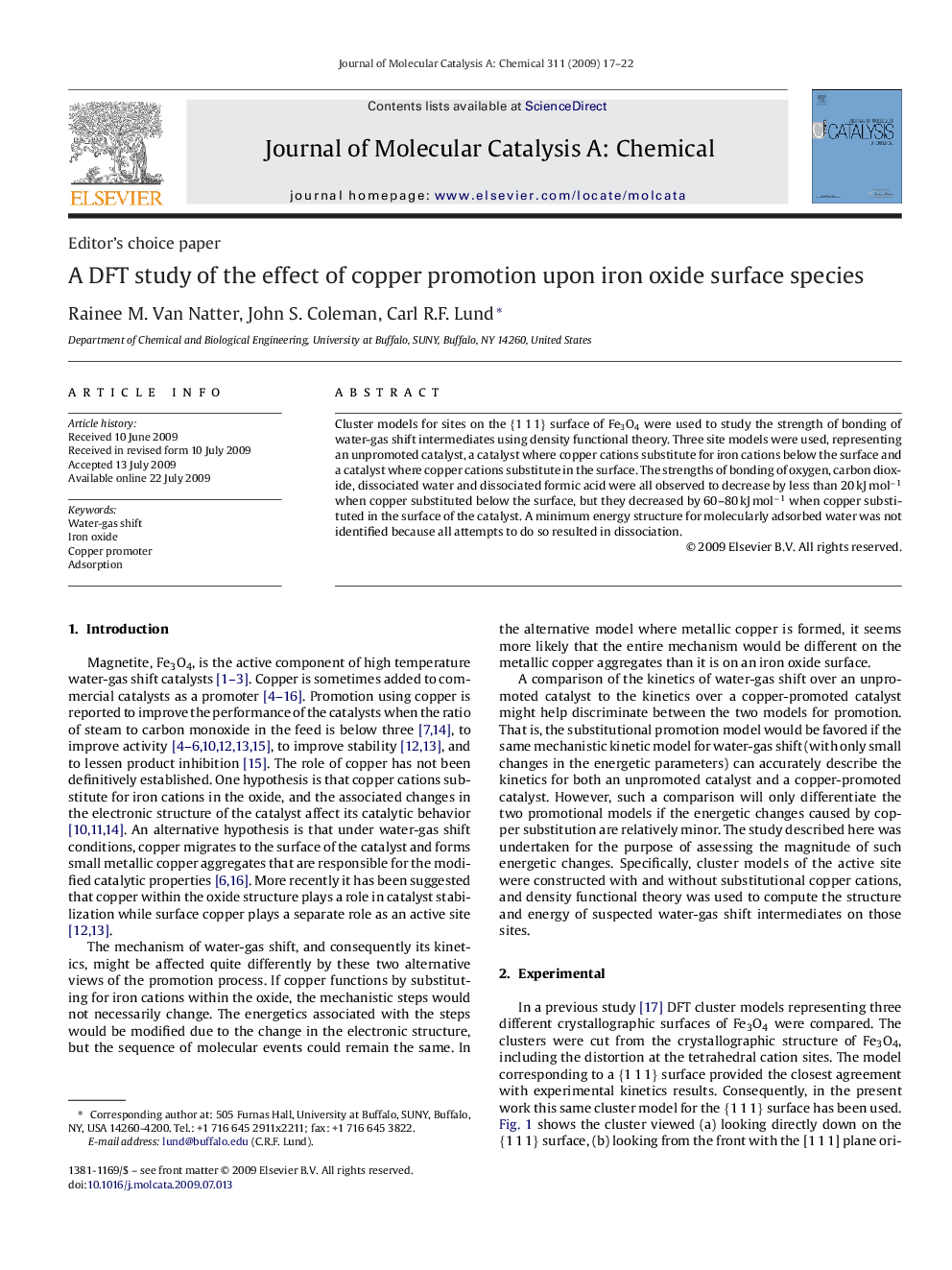| Article ID | Journal | Published Year | Pages | File Type |
|---|---|---|---|---|
| 67326 | Journal of Molecular Catalysis A: Chemical | 2009 | 6 Pages |
Cluster models for sites on the {1 1 1} surface of Fe3O4 were used to study the strength of bonding of water-gas shift intermediates using density functional theory. Three site models were used, representing an unpromoted catalyst, a catalyst where copper cations substitute for iron cations below the surface and a catalyst where copper cations substitute in the surface. The strengths of bonding of oxygen, carbon dioxide, dissociated water and dissociated formic acid were all observed to decrease by less than 20 kJ mol−1 when copper substituted below the surface, but they decreased by 60–80 kJ mol−1 when copper substituted in the surface of the catalyst. A minimum energy structure for molecularly adsorbed water was not identified because all attempts to do so resulted in dissociation.
Graphical abstractA DFT Study of the Effect of Copper Promotion upon Iron Oxide Surface Species, R. M. Van Natter, J. S. Coleman and C. R. F. Lund, Department of Chemical and Biological Engineering, University at Buffalo, SUNY, Buffalo, NY, USA 14260-4200. Adsorption of water-gas shift intermediates on active sites on iron oxide and copper-promoted iron oxide were compared using density functional theory. Relative to the unpromoted catalyst, the strength of adsorption on the promoted catalyst was weakened by less than 20 kJ−1 when copper-substituted below the surface. It was weakened by 60–80 kJ mol−1 when copper-substituted in the surface of the catalyst.Figure optionsDownload full-size imageDownload as PowerPoint slide
